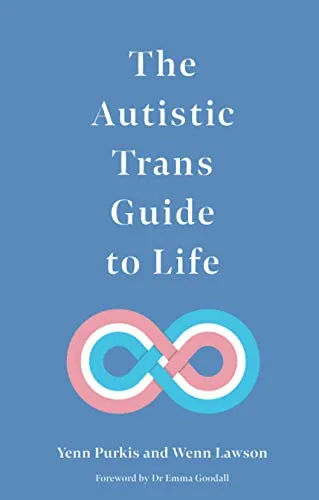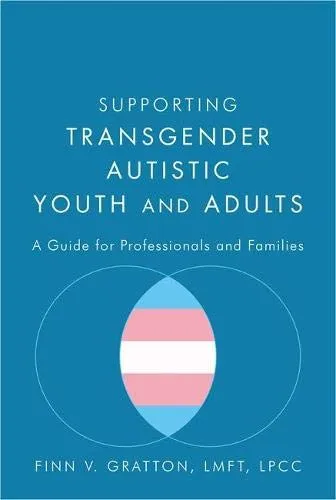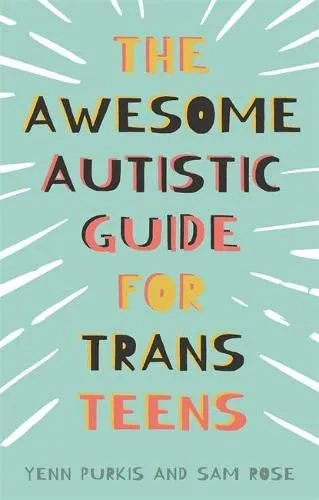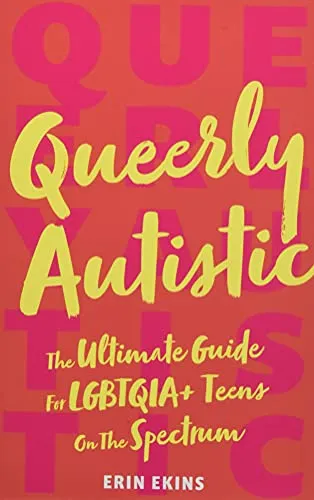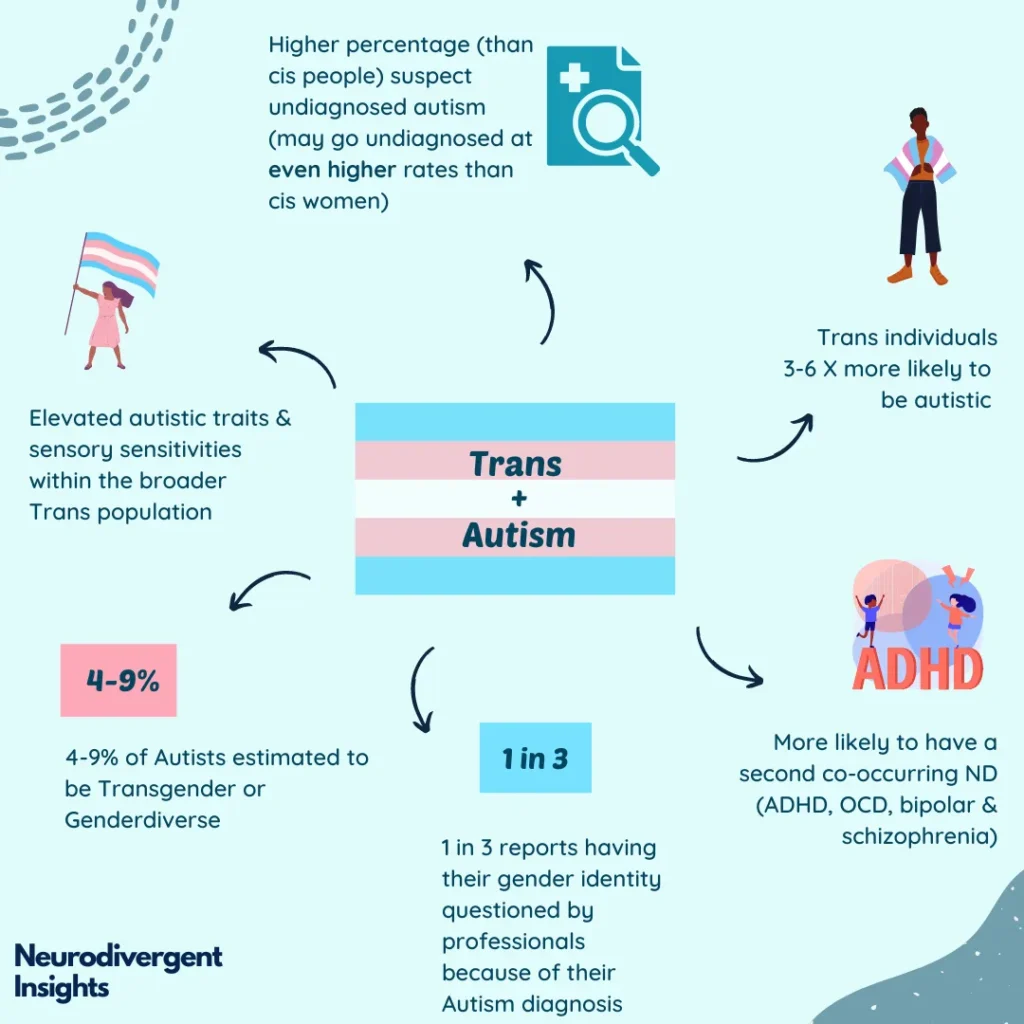
There is a significant overlap between genderqueerness and neurodivergence. In recent years there have been a few landmark studies that have helped us to understand just how much these two identities overlap and intersect. We are also likely just touching the tip of the iceberg as emerging research suggests Trans adults go undiagnosed at very high rates. So here is a rundown of the research behind today’s infographic.
Misdiagnosis/Undiagnosed
There is compelling research that autism goes under-diagnosed and misdiagnosed in cisgender women and that Autistic traits manifest differently in girls (Lai et al., 2020, Head et al., 2014; Loomes et al., 2017; and Frazier, 2014). Until recently, it has been unclear whether similar findings were true for Trans individuals. Emerging research points to the likelihood that Trans individuals may be even more likely to go undiagnosed. And in the same ways that autism can present differently in cis girls, there may also be specific manifestations of autistic traits within the Trans community which are poorly understood (which may interfere with diagnosis) Warrier et al., 2021.
Run-down of the Numbers
The following research was drawn from a large meta-study that included over 641,860 individuals.
💙 Warrier et al., 2021 found that transgender and genderqueer adults were three to six times more likely to be diagnosed as autistic than cisgender adults. Notably, this only includes diagnosed Autists–and many adults remain undiagnosed. Based on the global population, Warrier et al.2021 estimate somewhere between 3-9% of transgender and gender-diverse adults may be autistic.
💙 Regardless of an autism diagnosis, transgender & gender-diverse adults were more likely to report a higher level of autistic traits and sensory sensitives compared with cisgender adults Warrier et al., 2021.
💙 Trans and Gender-Diverse people are more likely to suspect undiagnosed autism than cis men and cis-women, suggesting they may go undiagnosed at higher rates than cis-women and cis-men Warrier et al.2021.
💙 Hisle-Gorman, et al., 2019 found that Autistic children/adolescents were 4 times more likely (than allistics) to be Gender-diverse (Hisle-Gorman, et al., 2019).
💙 4.8% to 26% of people who present at GD clinics had an autism diagnosis (compared to 1-2% of the general population) Warrier et al., 2021.
💙 1 in 3 reports having their gender questioned because they were Autistic. If you want to read more about this problematic intersection, I recommend reading ASAN, NCTE, and LGBTQ Task Force Joint Statement on the Rights of Transgender and Gender Non-Conforming Autistic People.
💙 Regardless of an autism diagnosis, transgender and gender-diverse adults were more likely to report higher levels of autistic traits, systemizing, and sensory sensitivity, and, on average, lower measures of empathy Warrier et al., 2021.
💙 While it can be challenging to quantify gender variance, past studies identified that between 4% and 5.4% of autistic children may potentially be transgender or gender-diverse (compared to 0.7% of non-autistic children (Jansen et al., 2016, Strang et al., 2014, May et al., 2017).
💙 Strang et al. 2014 studied 1605 children referred to medical providers for gender issues. Among the group, significantly greater proportions were Autistic (5.4%) or ADHD (4.8%) (compared to 1.7% in the comparison group). Autistic children were 7.59 x more likely to express gender variance ADHD children 6.64 x more likely. Gender variance occurred equally among AFAB and AMAB individuals.
Key Takeaways
Okay, that is a lot of information and stats. What are the key takeaways? Here they are:
Autistics are more likely to be trans and genderqueer than the general population.
Trans-Autistics are more likely to have their gender identity questioned because of their autism.
Trans-Autistics are likelier to experience a secondary neurodivergence or Psychological disorder (bipolar, OCD, depression, ADHD, or schizophrenia).
Trans-Autistics report higher rates of suspected undiagnosed autism (meaning they may be experiencing even more barriers to diagnosis). Thus Trans/Gender-Diverse Autists may be less likely to be diagnosed while experiencing more marginalization and oppression.
The risks, marginalization, & oppression are magnified when autism intersects with other marginalized identities. When autism + Trans intersect, it has implications both for medical care and Autism supports.
Implications
Some of the implications for Clinicians and society at large include:
💙 The above research highlights the need to improve access to diagnosis and care
💙 A need to provide more tailored support (i.e., offer specialized support groups such as Autistic support groups for Trans teens, Trans support groups for Autistic teens).
💙 Psychologists and medical providers should consider including routine screeners when working with children/adolescence referred for gender issues
💙 And finally, we need to understand how autism presents in this population better. I’ll leave you with these words from Warrier et al., 2021:
“We know that autism may present slightly differently in cisgender men and women. Yet, we don’t know if autism presents differently in transgender and gender-diverse individuals – and this is something we need to understand to ensure that doctors can better identify autism in this group… The needs of transgender and gender-diverse people remain poorly understood. They regularly face discrimination, abuse, and harassment. And in many places, their identity is questioned with little legal safeguarding of their rights. Anyone regardless of their gender, who has faced such adversities is likely to have poor mental health. As researchers, we must identify and address the factors that contribute to poor mental health in this group.”
We can do better. We can do better. We must do better.
Resources:
💙 If you’re a clinician looking to support your Trans-Autistic clients better, I recommend Supporting Autistic Trans youth and Adults and Working with Autistic Transgender and Non-Binary People.
(#affiliatelink).
💙 For tools to talk about gender, sexuality, and attraction in concrete terms, you can download the Gender Unicorn here (Trans Student Educational Resources, 2015). (For PDF of Gender Unicorn click here).
💙 If you’re Trans-Autistic and looking for books, workbooks, and resources, check out the collection of workbooks and resources I built in my Amazon store.
Note about research methodology and language
****The Trans community is a marginalized and systemically oppressed group; one way this shows up is in their notable absence and representation in research. I am grateful for the landmark study of Warrier et al., 2021 who provided a large-scale study on the topic of Trans-Autism (included 641,860 participants). This was a meta-study—what that means is that they found several studies via databases and ran statistics to provide a more global representation than the smaller studies on their own can represent. However, because of how gender was recorded in the smaller studies (i.e., some participants reported “other” on screeners), they were not always able to specify between Trans and Gender-Diverse. This is unfortunate for several reasons. However, for that reason, you’ll notice I use Trans and Gender-Diverse to reflect the research accurately. However, it is essential to note that there is a vast array of experiences represented under the umbrella of Gender-Diverse.
Citation
Hisle-Gorman, E. et al. Gender dysphoria in children with autism spectrum disorder. LGBT Heal.6, 95–100 (2019). Doi: https://pubmed.ncbi.nlm.nih.gov/30920347/
Griffiths, S. et al. The Vulnerability Experiences Quotient (VEQ): a study of vulnerability, mental health and life satisfaction in autistic adults. Autism Res. aur.2162, https://doi.org/10.1002/aur.2162 (2019).
Cassidy, S., Bradley, L., Shaw, R. & Baron-Cohen, S. Risk markers for suicidality in autistic adults. Mol. Autism9, 42 (2018).
Cassidy, S. et al. Suicidal ideation and suicide plans or attempts in adults with Asperger’s syndrome attending a specialist diagnostic clinic: a clinical cohort study. Lancet Psychiatry1, 142–147 (2014).
Loomes, R., Hull, L. & Mandy, W. P. L. What is the male-to-female ratio in autism spectrum disorder? A systematic review and meta-analysis. J. Am. Acad. Child Adolesc. Psychiatry56, 466–474 (2017).
Janssen, A., Huang, H. & Duncan, C. Gender variance among youth with autism spectrum disorders: a retrospective chart review. Transgender Heal.1, 63–68 (2016).
May, T., Pang, K. & Williams, K. J. Gender variance in children and adolescents with autism spectrum disorder from the National Database for Autism. Res. Int. J. Transgenderism18, 7–15 (2017).
Strang, J. F. et al. Increased gender variance in autism spectrum disorders and attention deficit hyperactivity disorder. Arch. Sex. Behav.43, 1525–1533 (2014). DOI: https://pubmed.ncbi.nlm.nih.gov/24619651/
Lai, M.-C. & Szatmari, P. Sex and gender impacts on the behavioural presentation and recognition of autism. Curr. Opin. Psychol.33, 117–123 (2020).
Head, A. M., McGillivray, J. A. & Stokes, M. A. Gender differences in emotionality and sociability in children with autism spectrum disorders. Mol. Autism5, 19 (2014). DOI: https://pubmed.ncbi.nlm.nih.gov/24565360/
Frazier, T. W., Georgiades, S., Bishop, S. L. & Hardan, A. Y. Behavioral and cognitive characteristics of females and males with autism in the Simons simplex collection. J. Am. Acad. Child Adolesc. Psychiatry53, 329–340.e3 (2014).
Trans Student Educational Resources, 2015. “The Gender Unicorn.” http://www.transstudent.org/gender.
Warrier, V., Greenberg, D.M., Weir, E. et al. Elevated rates of autism, other neurodevelopmental and psychiatric diagnoses, and autistic traits in transgender and gender-diverse individuals. Nat Commun 11, 3959 (2020). https://doi.org/10.1038/s41467-020-17794-1

